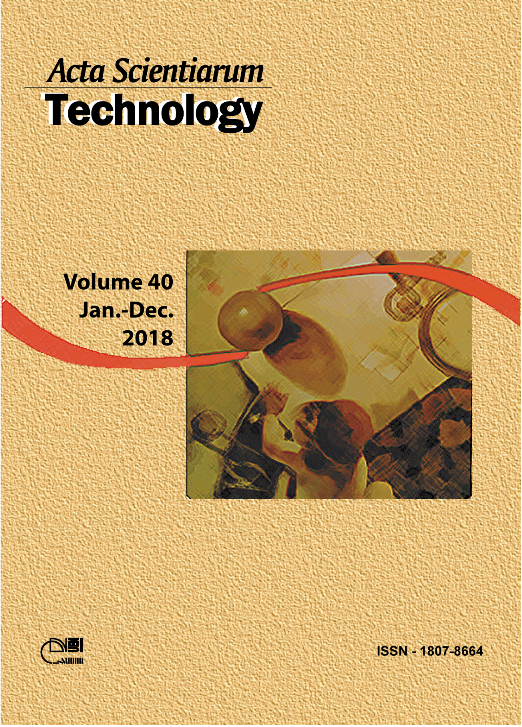<b>Centesimal composition, fatty acids profile and the nutritional quality index of four seafood species from the southern region of Brazil
DOI:
https://doi.org/10.4025/actascitechnol.v40i1.39351Palavras-chave:
polyunsaturated fatty acids, omega-3, omega-6, eicosapentaenoic acid (EPA) and docosahexaenoic acid (DHA).Resumo
The objective of this study was to evaluate the centesimal composition, fatty acid profile and the nutritional quality index of four seafood species: pink shrimp (Penaeus brasiliensis), Pacific white shrimp (Litopenaeus vannamei), mussel (Perna perna) and octopus (Octopus vulgaris), that were collected in Santa Catarina, Brazil. The nutritional quality of the lipid fraction was evaluated by the index of thrombogenicity (IT), index of atherogenicity (IA) and the hypocholesterolaemic fatty acids-to-hypercholesterolaemic fatty acids ratio (h/H). All the studied species presented a high protein content (12.88-21.61%) and a low amount of total lipid (0.26-4.07%). The pink shrimp had the most protein and octopus contained the least total lipid. Eicosapentaenoic acid and docosahexaenoic acid were detected in all samples, presenting the highest values in mussel (204.62 and 123.57 mg 100 g-1, respectively). The analysed species presented low IT and IA values and an h/H ratio around 2 or higher, and therefore, they are considered potentially healthy foods. Moreover, the shrimp species can be classified as a source of omega-3s, while the mussels can be categorised as having a high content in these polyunsaturated fatty acids.
Â
Â
Downloads
Downloads
Publicado
Como Citar
Edição
Seção
Licença
DECLARAÇíO DE ORIGINALIDADE E DIREITOS AUTORAIS
Declaro que o presente artigo é original, não tendo sido submetido í publicação em qualquer outro periódico nacional ou internacional, quer seja em parte ou em sua totalidade.
Os direitos autorais pertencem exclusivamente aos autores. Os direitos de licenciamento utilizados pelo periódico é a licença Creative Commons Attribution 4.0 (CC BY 4.0): são permitidos o compartilhamento (cópia e distribuição do material em qualqer meio ou formato) e adaptação (remix, transformação e criação de material a partir do conteúdo assim licenciado para quaisquer fins, inclusive comerciais.
Recomenda-se a leitura desse link para maiores informações sobre o tema: fornecimento de créditos e referências de forma correta, entre outros detalhes cruciais para uso adequado do material licenciado.



















